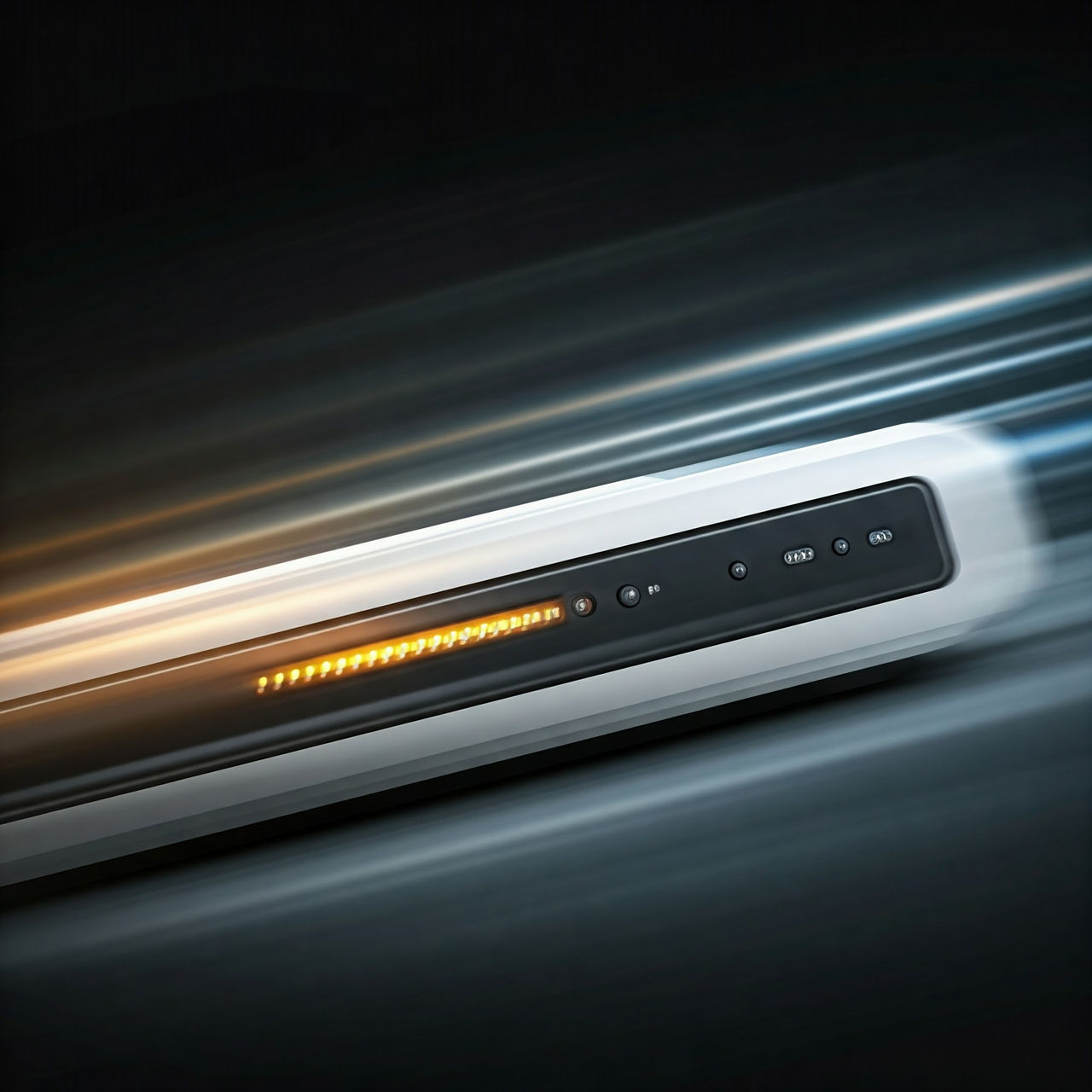
What is NBN: Guide to Australian NBN internet
05 July 2024
The NBN (National Broadband Network) rolled out across Australia between 2015 and 2020 with the aim of bringing faster and more reliable internet connections to individuals and businesses.
Even though the acronym NBN (officially nbnTM) is widely known, that doesn’t mean that Australians know all about their National Broadband Network. So, if you have any questions at all (even ones that have felt too basic to ask!) please read on for a complete guide.
What does NBN stand for?
NBN stands for the National Broadband Network.
What is the NBN?
The National Broadband Network (NBN) is Australia’s current internet connection network. It was rolled out across Australia between 2015 and 2020, all with the aim of giving all Australians fast and reliable internet access.
A bit of history: What did Australia have before the NBN?
Australia’s first internet network was powered by copper wire. This was all well and good (in fact the NBN uses some copper wire) but increased numbers of connections and greater demand for faster speeds and bigger bandwidth meant that the network was struggling.
The old network was called ADSL (which stands for Asymmetric Digital Subscriber Line). ADSL was first launched in Australia in 1999, when the internet was still youthful. It was the first ‘always open’ internet connection, meaning that you didn’t have to choose between making a phone call or using your computer (needing a phone line every time you wanted to connect was called DSL).
Why was the NBN built?
In today’s digital age, being connected online is not only a luxury but a necessity. On a country-wide level, connectivity is connected with a strong economy, with modelling showing that even a small increase in broadband speed (1 megabit/second) can increase Australia’s economy by $122 billion!.
On an individual level, fast internet connection is vital for businesses for everything from website traffic to payments. For individuals, connectivity is needed both for working from home, entertainment (everything from streaming shows to gaming) and for life-administration (from staying in touch with friends and family through to online shopping and connecting with services).
What is the NBN Co?
‘Co’ stands for ‘company’ so NBN Co is the company that built, runs and maintains Australia’s NBN network. They’re set up as a government business entity so are owned by the federal government.
NBN Co is all about the basic infrastructure that makes up the National Broadband Network but they’re a wholesaler rather than being customer-facing. This means that, instead of dealing directly with NBN Co, individuals and businesses choose plans with their preferred telecommunications company.
What technology does the NBN use?
Describing the technology used by the NBN is not a simple task. Partly because not many of us know our bits from our bytes, but also because the NBN uses different technology in different geographical areas.
Australia’s a big place so it’s not surprising that central Sydney has different needs and capacity for tech solutions compared with Birdsville. Plus, there’s efficiency gained by using what’s already in place if it can be successfully incorporated into the NBN.
So, the NBN uses what’s called a ‘Multi Technology Mix’. You might have already heard of some of these terms but let’s list them all and describe them in a hopefully not-too techy way.
Firstly, let’s look at the three most common types of technology. Each involves either or both of a fibre-optic cable (also known simply as ‘fibre’, a glass or plastic strand that transmits data using light) and copper wires (widely used in telecommunications for centuries) between an NBN Co Node and your home or business.
These are listed in order from fastest (and most reliable) to slower (and more susceptible to disruptions):
Fibre to the Premises (FTTP): FTTP is when a fibre-optic cable runs directly to your home or business from the nearest NBN Co Node, either underground or via overhead wires. FTTP gives the fastest connection possible, including newly offered speeds known as Superfast and Ultrafast (read more about those in our article about NBN Speeds).
Fibre to the Curb (FTTC): with FTTC, you have a mix of fibre and copper between the NBN Co Node and your home, with a linking in between called a ‘distribution point unit’ or DPU.
Fibre to the Node (FTTN): with FTTN, copper wiring is used between your home and the NBN Co Node.
Next, let's look at an option that has been used in some multi-dwelling buildings, like apartment blocks:
Fibre to the Building (FTTB): A fibre-optic cable runs directly to the overall building from the nearest NBN Co Node, and then copper wiring runs from the in-building node to each apartment.
Then, there’s an option that was used in properties that had existing cable (think ‘pay tv’) networks:
Hybrid Fibre Coaxial (HFC): in areas with existing cable (or ‘Pay TV’) networks, the NBN uses the existing coaxial cables (insulated cables with a copper core) to connect your home to an NBN Co Node, instead of fibre-optic cable or existing copper wires.
Finally, there are options within the NBN’s Multi Technology Mix that use wireless technology:
Fixed Wireless: An antenna installed on your home allows transmission of a broadband connection from a Fixed Wireless Tower. This tech is mostly used in regional areas.
Satellite (SkyMuster): An NBN network signal is beamed all the way from a special SkyMuster satellite orbiting the earth to a satellite dish installed on your home.
Here’s a table putting all these options together:
NBN Technology | Abbreviation | Details |
Fibre to the Premises | FTTP | A fibre-optic cable runs directly to your home or business from the nearest NBN Co Node, either underground or via overhead wires. FTTP gives the fastest connection possible. |
Fibre to the Curb | FTTC | Fibre cable and copper link at a distribution point somewhere between the NBN Co Node and your home. |
Fibre to the Node | FTTN | Copper wiring is used between your home and the NBN Co Node. |
Fibre to the Building | FTTB | In some multi-dwelling buildings, like apartment blocks, a fibre-optic cable runs directly to the overall building from the nearest NBN Co Node, and then copper wiring runs from the in-building node to each apartment. |
Hybrid Fibre Coaxial | HFC | The NBN uses existing coaxial cable (or Pay TV) to connect your home to an NBN Co Node instead of fibre-optic cable or existing copper wires. |
Fixed Wireless | - | An antenna installed on your home allows transmission of a broadband connection from a Fixed Wireless Tower. |
Satellite (SkyMuster) | - | An NBN network signal is beamed from a SkyMuster satellite to a satellite dish installed on your home. |
Can everyone in Australia get the NBN?
NBN Co states that ‘on rare occasions, some premises cannot be connected’, however as at mid-2023, 12.3 million homes had NBN access.
Do I have to use the NBN?
In short, the answer is no. NBN Co says that the National Broadband Network is responsible for carrying over 80 percent of Australia’s downloaded data. So what about the other 20 percent?
We’ll go through some other options for connectivity, but before you consider changing, make sure you’re not falling for any incorrect myths about the NBN and have taken steps to maximise broadband speed within your home.
Other options for connectivity are:
5G / 4G Home Internet: Similar to getting data on your smartphone, you can power your home internet with 4G or 5G (that’s 5th generation, not 5gHtz). The 5G option is not available everywhere, as the 5G network is still being rolled out, but worth considering if you live in a major metro area.
Mobile broadband: Operated via a little USB-dongle, this wireless device allows you to create your own wi-fi network and has the advantage that you can take it with you wherever you go. This isn’t a great option if you're a big data user as plans are generally restrictive.
Non-NBN Co fibre networks: Privately owned, non-NBN providers have networks, though generally only in large population centres and, for some, only in specific newly built homes or apartments.
Non-NBN satellite internet: SkyMuster is the NBN Co’s satellite internet system, however Starlink is a new private option, especially for rural and remote areas of Australia.
Will there be ongoing improvements to the NBN?
The NBN needs to continue to evolve in order to meet our seemingly insatiable demand for being online. NBN Co points out that the average household in 2023 had 21 connected devices, a figure that’s likely already grown since.
The NBN are upgrading the fibre part of the network in order to offer more households and businesses, planning to enable up to 10 million premises speeds in excess of 500 Mbps by the end of 2025.


